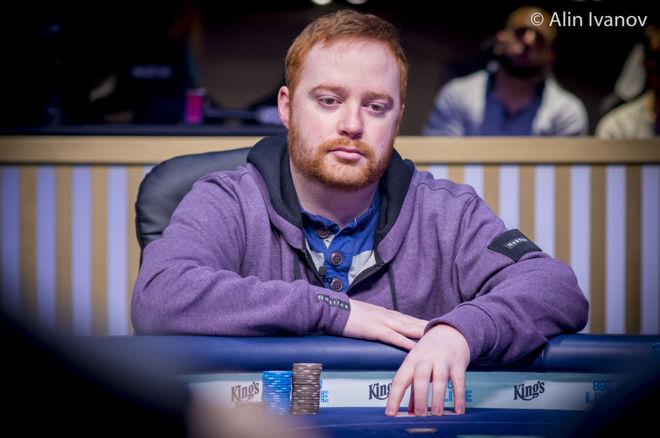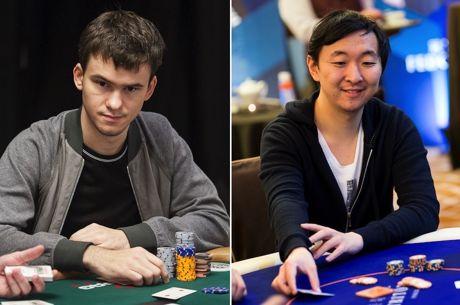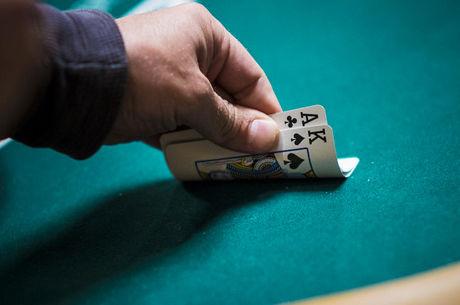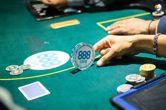Hand Review: Niall Farrell Induces a Big Bluff at WSOP Europe

Covering live poker tournaments for a living affords me the opportunity to see countless thousands of hands played out, many of which offer interesting and potentially valuable insights into how players �� both amateurs and professionals �� play the game. In this ongoing series, I'll highlight hands I've seen at the tournaments I've covered and see if we can glean anything useful from them.
The Scene
Back to the recently completed World Series of Poker Europe for another hand this week, and it's another one involving a player who made the final table of the �10,350 Main Event. This time, we're going to look at a hand played by Niall Farrell early on that helped set him up to run deep.
Late on Day 2, Farrell was seated with one of the chip leaders, Laszlo Bujtas, who had been steamrolling everyone he was sitting with over the early stages of the tournament. The Hungarian was pushing the action with raises and reraises and had built up to nearly 500,000 at 1,200/2,400/400, well covering the Scotsman's stack of around 120,000 when the following hand took place.
The Action
Bujtas made it 5,400 to go from early position and action folded to Farrell in the small blind. He reraised to 19,200, chasing away the big blind, and Bujtas called.
They went heads up to the Q?5?9? flop, and each player checked. Farrell checked again when the 5? fell on the turn. Bujtas bet 20,000, and Farrell called.
The 2? completed the board. Bujtas put Farrell's remaining 79,200 at risk with an all-in shove, and Farrell thought briefly before calling.
Bujtas tabled 7?6? for a missed straight, and Farrell doubled up after showing Q?10?.
Concept and Analysis
Dealing with aggressive chip leaders who are going to put you to tough decisions for your stack is an inescapable part of tournament poker. Sometimes you're going to have to take a stand with a less-than-premium holding, and Farrell shows one method of dealing with such big stacks here.
In a vacuum, three-betting Q?10? from the small blind against an early position raise is going to leave you in some dominated spots, but Farrell likely figured he had a little more leeway than usual and would be facing some weaker hands than a typical opener would hold.
Many players like to use a "reraise or fold" strategy from the small blind, and I'd put myself mostly in that category. Flatting raises, especially those on the smaller side, simply invites three-way pots where you're out of position against two players, since it gives the big blind such a fantastic price to continue.
Given all that, I like Farrell's decision to three-bet this hand. It flops pretty well, so Farrell will face less tricky spots than he would with a similar medium-strength holding like, say, 9x9x.
Once he flops top pair, Farrell makes the interesting decision to check. In general, betting would be the standard play in this spot, especially with a bunch of draws present. Betting gets value from draws, weaker pairs, and floats. If I'm going to check top pair in these spots, I do like to do it with a weaker kicker so I'm not costing myself big when I semi-cooler someone, and this fits the bill.

Bujtas checks back, and Farrell continues to play possum on the turn after the board pairs. He finally induces the bet he wants when Bujtas puts in about a half-pot stab, and after Farrell calls the river brings a brick.
On the river, Farrell checks again and Bujtas puts him all in for roughly a pot-sized bet. Farrell has to think about what hands Bujtas could be jamming, but it's a bit difficult to see what he could be representing outside of trip fives. There are only two queens left in the deck, and would Bujtas furthermore have bet better queens on the flop for value?
Indicating he had a plan to call it off the whole time, Farrell got it in there pretty quickly.
You hardly ever love getting a stack of 50 big blinds in with one pair, medium kicker. But when there's an aggressive big stack at the table, you have to fight back and take stands with less than the nuts. Sometimes, giving them rope by check-calling is the best strategy.
Bluffs like the one Bujtas tried here can be very profitable against players who overvalue their tournament lives, but you have to be wary of tough pros like Farrell who aren't afraid to mix it up. He set his opponent up by taking a passive line with top pair after three-betting, and was rewarded with a big double en route to his fifth-place finish.









